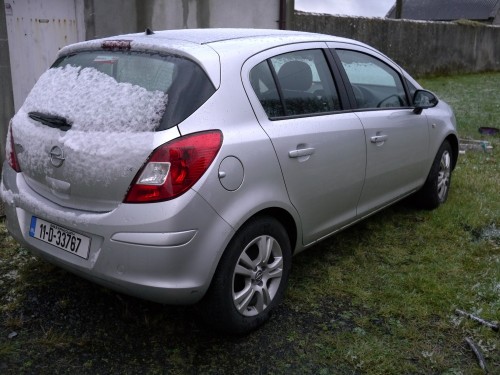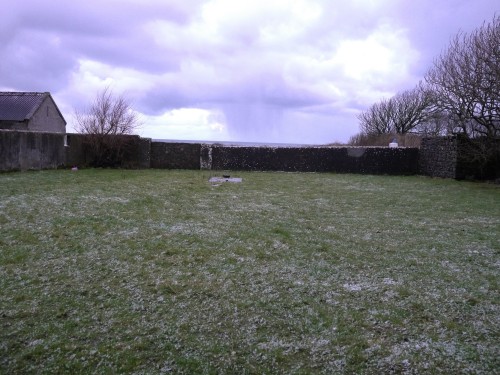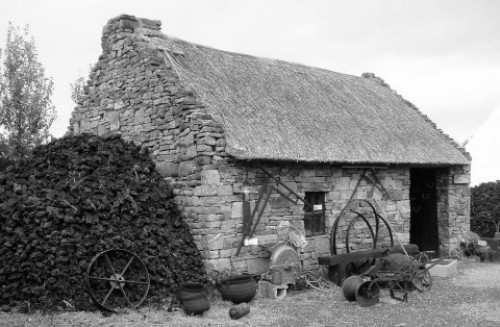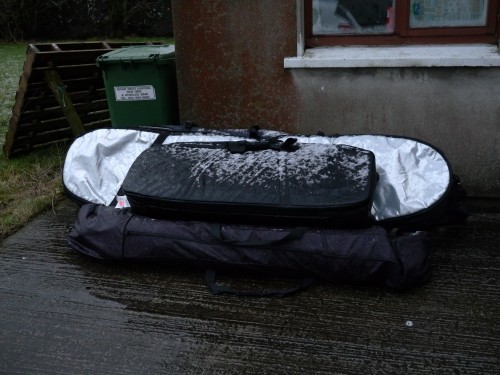Ireland part 3
by Graham
Ireland is full of black things—Guinness, clouds, black pudding, stormy seas—and they define the culture there. The most perplexing of these dark things is peat. What is peat?, I hear all the non-Irish say. To put it simply, peat is mud that burns. Mud that is made in bogs. Bogs are acidic and lack lots of oxygen which then causes the organic material and plant matter to break down into peat, which is then harvested and compressed into bricks, which are then delivered to the stores to be purchased for home fires. From the bog comes fire!
Peat, it seems, can even catch fire when wet. How? I have no idea. The local farmers have whole barns and garages devoted solely to peat, and many just have huge piles of it lying outside their houses exposed to the constant rain. Given the large amount we burned each night to sustain a hot fire, I reckon each barn or garage is about a fortnight’s worth of peat. We would stack the peat bricks like a jenga game– more and more of the stubborn peat to burn burn burn!
Peat was our life! Why is the peat so important, you ask? Without wind and with dropping temperatures, the peat fire was the pride of our days. We’d collect bales of it so as to always have a warming glow from the fire place.
An old Irishman, a local from Easkey area, asked us which was worse “the cold or the rain”. We weren’t really sure of our answer so he gave us his: “well, you can get away from both, but the cold will cost ya money!”
The cold, though, is bearable; a lack of wind isn’t. Our days were spent leaving our Easkey cottage home early and driving madly around the entire County Sligo coastline (yes, the entre coastline and more, actually) checking out spots and possibilities. “Is it big enough here?” “Windy enough to sail?” “Is it just me or is the wind straight onshore and light?”. Such were our days, and I enjoyed this exploration of the Irish landscapes with my close friend beside me in the car and many kilos of unused windsurfing gear above.
The winds shifted west. And on one morning it snowed— a rare occurrence during westerlies. The owner of Easkey’s only pub, The Fisherman’s Weir (by the way, has there ever been a better name for a pub?), said, “the old people say it is bad when it snows on a west wind.” Not a bad sign or omen, rather Satan is sticking his hand up and wrecking havoc—just bad. Baaaaad. Like an echo of the dying newly born lambs who entered a world too cold for them. “It’s too cold for lambing,” our landlord said.

Waking up to snow was unfortunate for us as windsufers but it was the death of many a newly born lamb.
But while this may have been bad for windsurfing—the lack of wind, that is— we did not let it ruin the trip. Getting skunked is part of being a windsurfer. How often do we pull up to the beach only to find that there is no wind today? We sit, we wait, we drive down the coast or up it. But when the wind does decide to blow. When pressure differences align, with the fight of our souls! we take advantage of it! Nature teases us daily. And we return always, sail and board in our hands. A form of religious reverence to the ocean: I will step blindly forward naked except for my cloak of faith, and I know that she, the sea, will make my path. When she, the sea, finally graces us and allows us our pleasure (like fire from a bog), it is good and better than any other satisfaction. Just wholly good.



Nice read. As always…
Nice read…. During this time of year it is usually winter in Europe and windsurfing is a predominantly summer activity. Graham you should be in Australia or South Africa and giving us joy with your style. Nevertheless, you have style as a writer as well.
agree, it’s really nice..http://www.jogosdoxmen.com
very good, look forward to view your other articles.